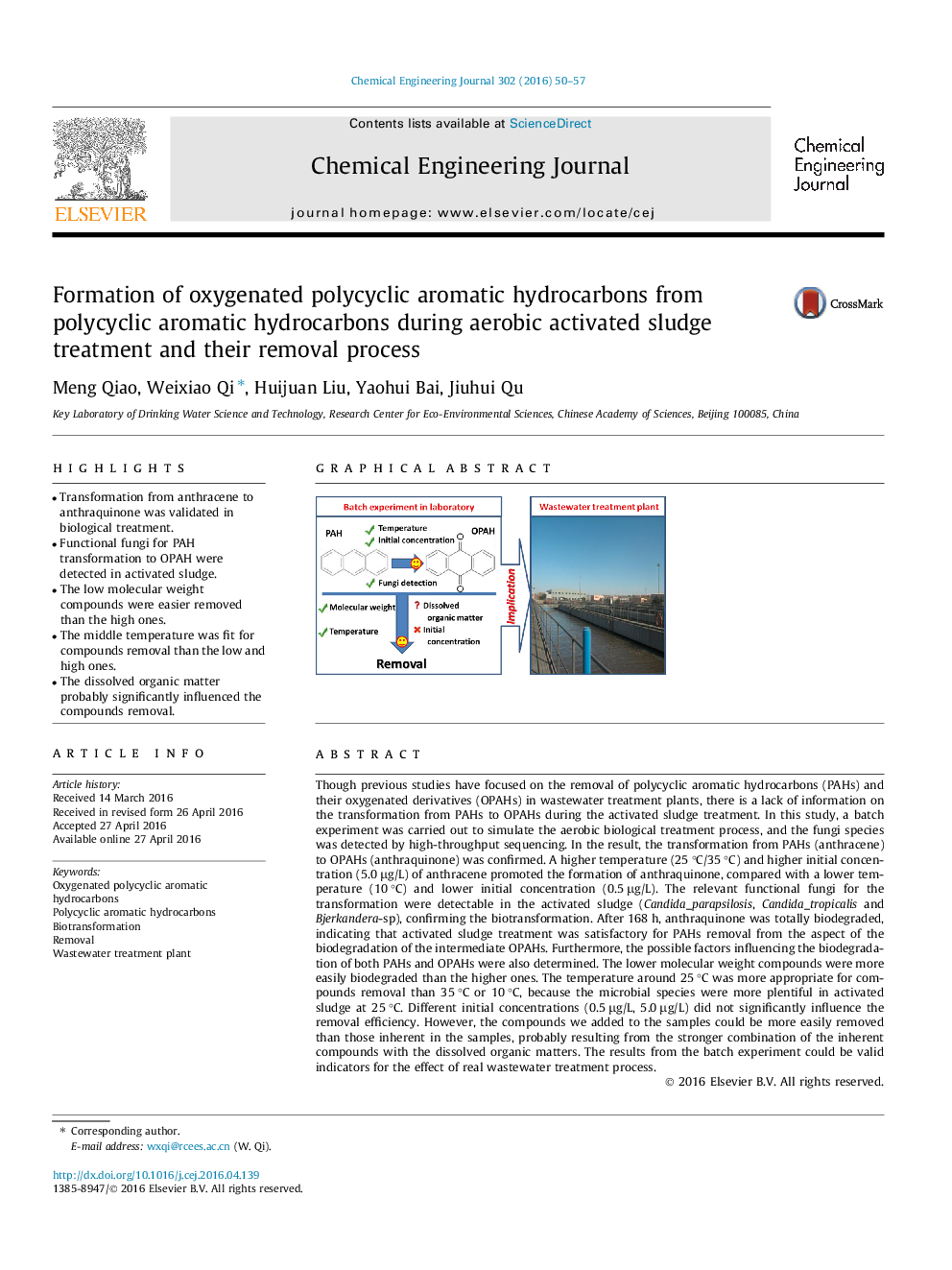| کد مقاله | کد نشریه | سال انتشار | مقاله انگلیسی | نسخه تمام متن |
|---|---|---|---|---|
| 145295 | 456338 | 2016 | 8 صفحه PDF | دانلود رایگان |
• Transformation from anthracene to anthraquinone was validated in biological treatment.
• Functional fungi for PAH transformation to OPAH were detected in activated sludge.
• The low molecular weight compounds were easier removed than the high ones.
• The middle temperature was fit for compounds removal than the low and high ones.
• The dissolved organic matter probably significantly influenced the compounds removal.
Though previous studies have focused on the removal of polycyclic aromatic hydrocarbons (PAHs) and their oxygenated derivatives (OPAHs) in wastewater treatment plants, there is a lack of information on the transformation from PAHs to OPAHs during the activated sludge treatment. In this study, a batch experiment was carried out to simulate the aerobic biological treatment process, and the fungi species was detected by high-throughput sequencing. In the result, the transformation from PAHs (anthracene) to OPAHs (anthraquinone) was confirmed. A higher temperature (25 °C/35 °C) and higher initial concentration (5.0 μg/L) of anthracene promoted the formation of anthraquinone, compared with a lower temperature (10 °C) and lower initial concentration (0.5 μg/L). The relevant functional fungi for the transformation were detectable in the activated sludge (Candida_parapsilosis, Candida_tropicalis and Bjerkandera-sp), confirming the biotransformation. After 168 h, anthraquinone was totally biodegraded, indicating that activated sludge treatment was satisfactory for PAHs removal from the aspect of the biodegradation of the intermediate OPAHs. Furthermore, the possible factors influencing the biodegradation of both PAHs and OPAHs were also determined. The lower molecular weight compounds were more easily biodegraded than the higher ones. The temperature around 25 °C was more appropriate for compounds removal than 35 °C or 10 °C, because the microbial species were more plentiful in activated sludge at 25 °C. Different initial concentrations (0.5 μg/L, 5.0 μg/L) did not significantly influence the removal efficiency. However, the compounds we added to the samples could be more easily removed than those inherent in the samples, probably resulting from the stronger combination of the inherent compounds with the dissolved organic matters. The results from the batch experiment could be valid indicators for the effect of real wastewater treatment process.
Figure optionsDownload as PowerPoint slide
Journal: Chemical Engineering Journal - Volume 302, 15 October 2016, Pages 50–57
